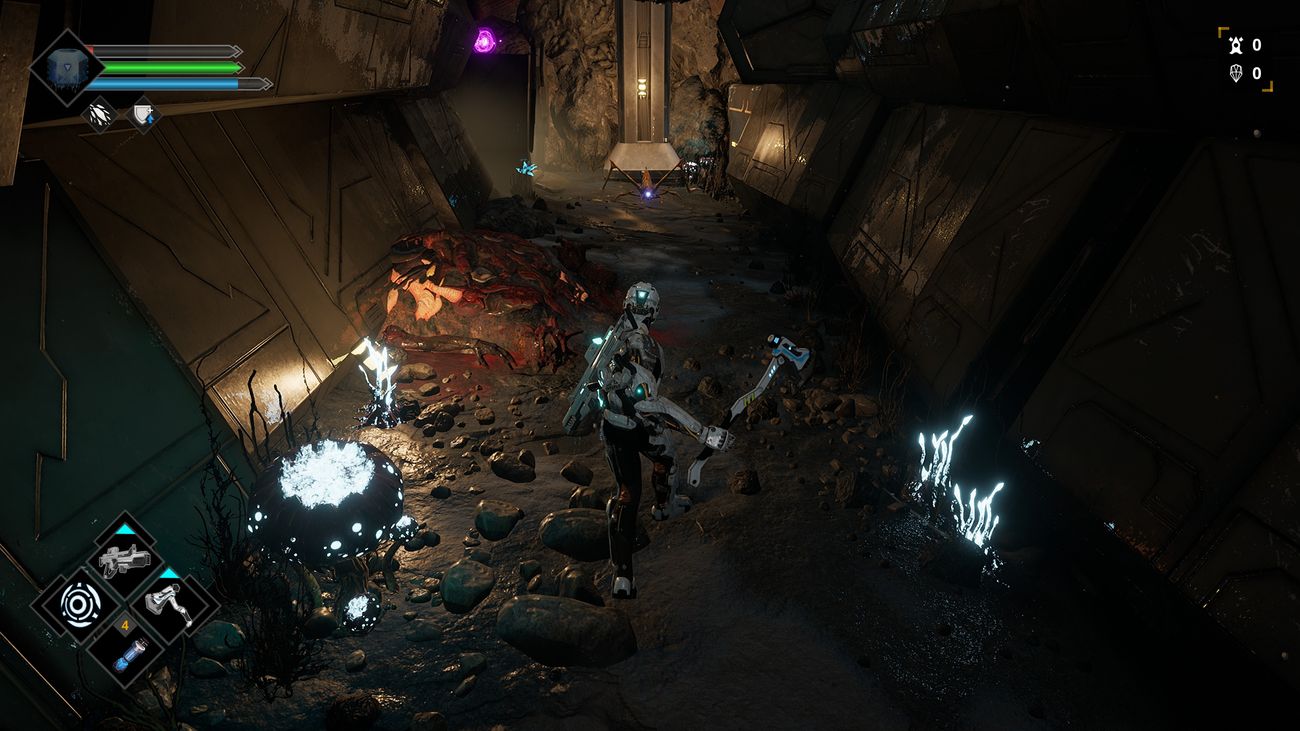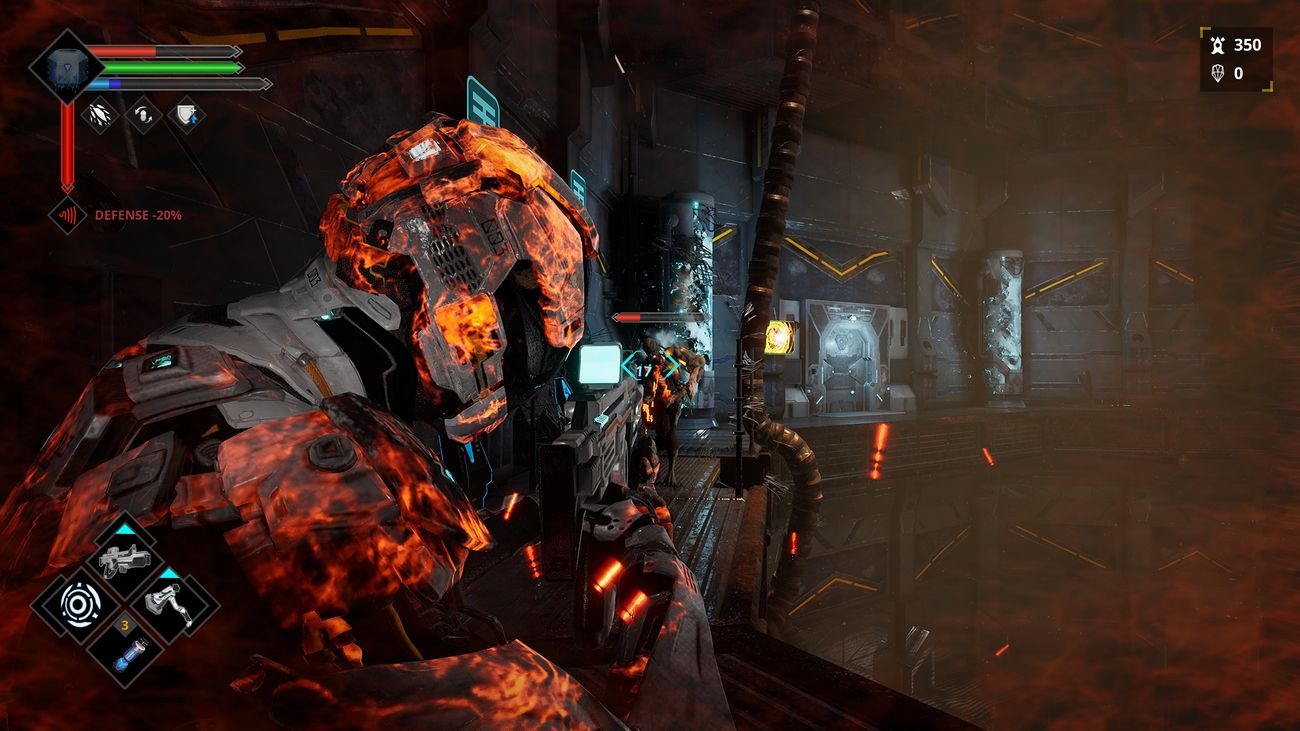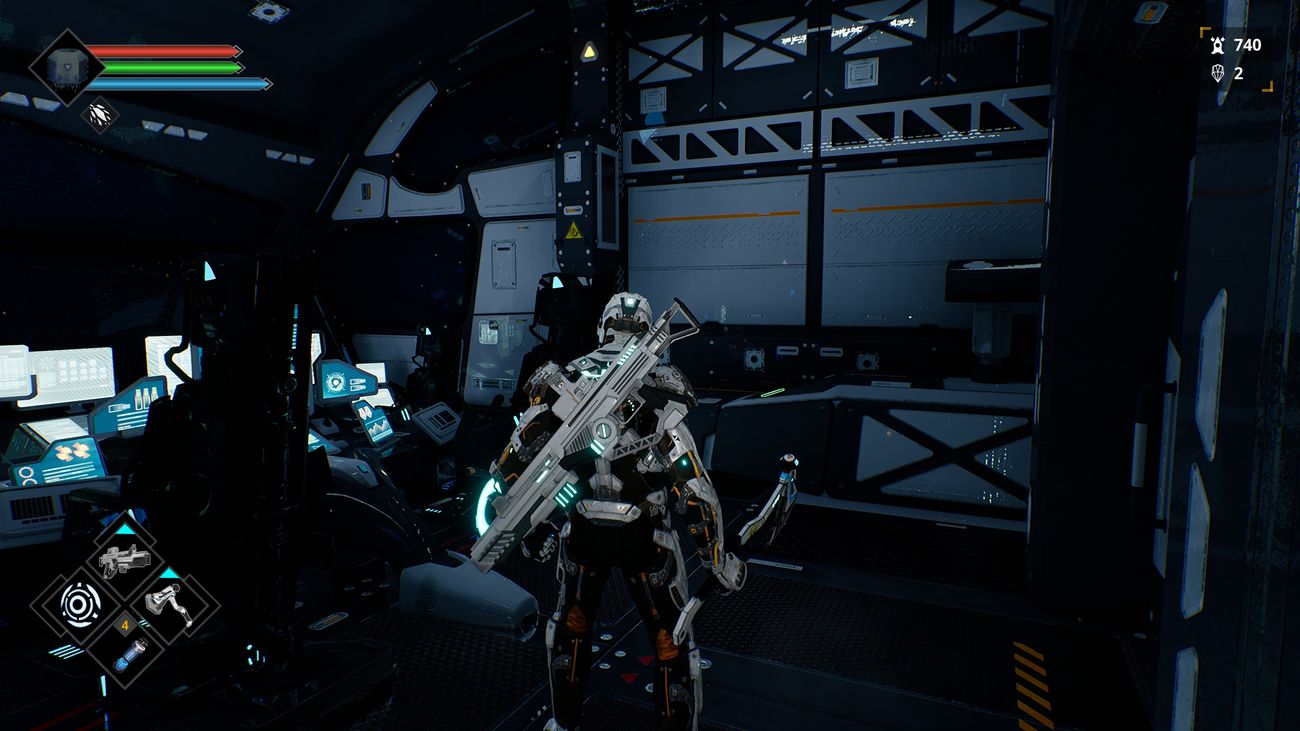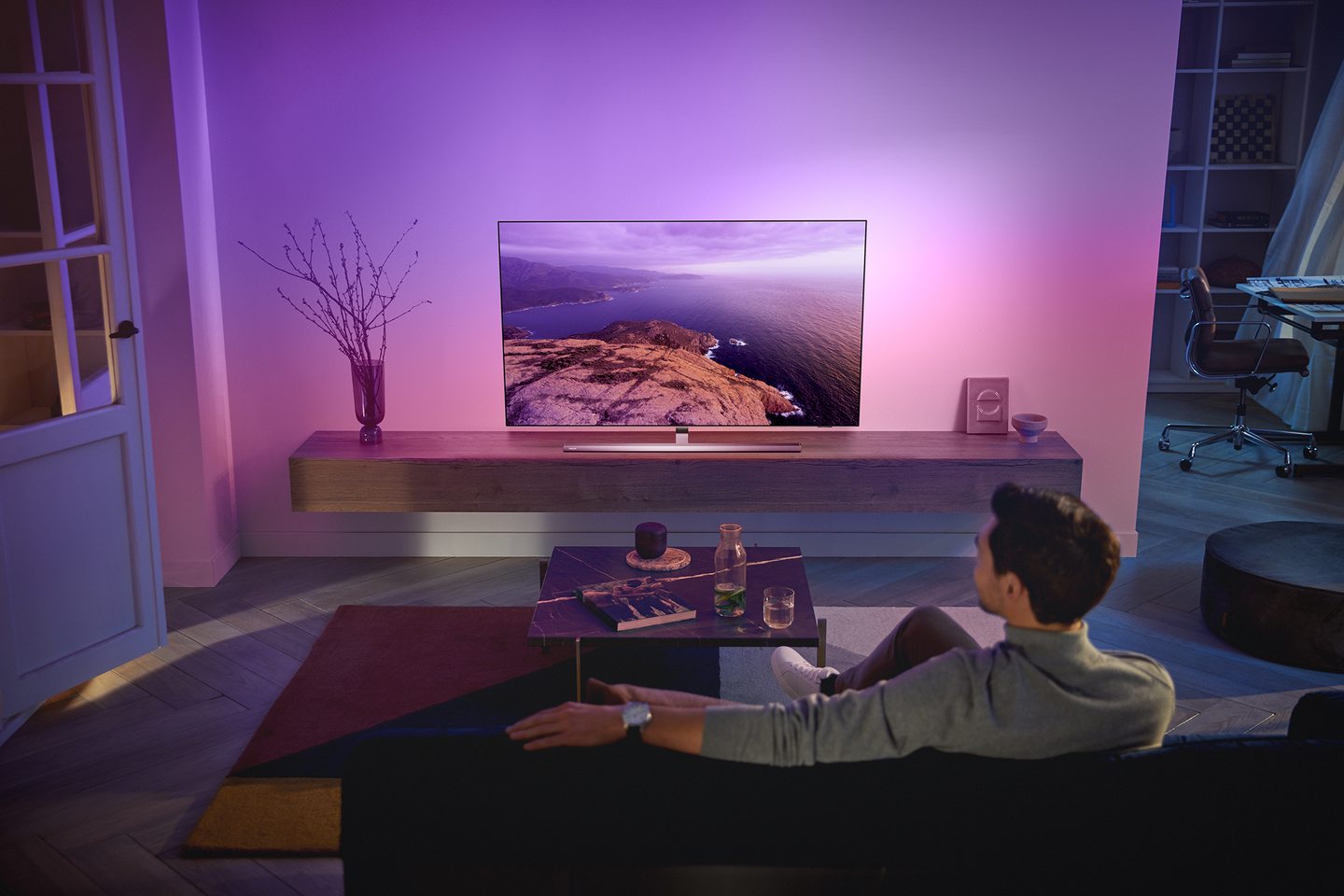Dolmen – -apkrig
Eggs eggs
On the Dark Souls copying scale, where 1 is “a very mild and sophisticated camouflaged inspiration in certain aspects of the game” and 10 is a “one-to-one clone,” Dolmen deserves nine and a half. And that minus half point figures here only thanks to a relatively new sci-fi setting, which flirts slightly with the cosmic horror.
You look at a mining colony somewhere in space that has been hit by an obligatory catastrophe. This time, in the form of the unexpected and unpredictable effects of the mysterious mineral and its interdimensional radiation, which tore the veils of reality, allowed the intersection of dimensions and opened cracks to other worlds. From where, as usual, a horde of alien scumbags began to roll.
On the one hand, the premise is so poor, but it does not automatically mean failure. If handled well, it could easily offer an engaging story background. But the rest of the game looks like the still warm paper that just fell out of Xerox. Challenging battles, endurance management, intentionally slow and clumsy hero, great emphasis on the timing of attacks and positional play, throwing the collected souls (here nanites) to the ground after death – in short, everything safely in place. Even the mapping of the control keys is identical to the Japanese pattern. Which, of course, isn’t bad a priori – at least you don’t have to get used to it for long.

Sticks underfoot
On paper, Dolmen has everything he needs to be terribly unoriginal, but at least a fun game. But he still has a lot of work to do from a similar goal. In its current state, it encounters the same problem on which so many development studies have already broken their teeth – the genre needs a very sensitively and skillfully set design, so that the characteristic and strangely addictive torment of the player does not turn into dusty frustration.
The draconian challenge is, of course, a welcome part of the experience and the consonant player counts on it, but it needs to be fair so that the player knows what he did wrong so that he can learn to prevent it. Dolmen does not have a clear shield in this respect, and this is mainly due to the faint animations associated with exaggerated damage from enemy attacks.
When the monster barely wiggles its claws strangely and three-quarters of your health suddenly disappears, without it being clear at first what happened, the enthusiasm for the game gets a really cold shower. The fights then look very plastic, the animations are wooden and I didn’t believe in the interventions (neither mine nor the enemy’s), nor what would be a fingernail.

There is no weight from them, no kinetic energy that should endanger you or your opponents. Instead, everyone is tinkling with tufts of cotton candy, which will take you down for two blows. The result is simply … weird. Failure doesn’t make you want to try again, it’s just not fun enough. And victory brings relief that you finally have it over, rather than some fighting pleasure or satisfaction. And that is a fundamental problem. After all, the sweet feeling of one’s own superiority and the winning break after overcoming a particularly tough fight is the central reason why the souls play at all. But it’s just missing here.
The situation is probably not saved by the biggest deviation from the traditional pattern: the ability to attack from a distance at any time during a battle without the need to specifically switch to a spell or other weapon, because we are in a technologically advanced future and a pistol or rifle is common equipment. In any situation, all you have to do is hold the left trigger and the character draws the quiver, even though you usually have an ax in your hand.
But even in this case, there is nothing to stand for yet. On the one hand, the feelings and feedback during firing and intervention are comparable to melee combat – that is, they almost do not exist – and on the other hand, when an attempted shooting duel, another unflattering fact comes to the surface: Enemies are dumb as garden gravel.
All you have to do is attack from a slightly different height level or from behind an obstacle and the poor messenger of cosmic terror will remain as a clueless hydrant until it falls in the rain of your projectiles. True, on the one hand, it’s nice that you can practically avoid a number of particularly annoying fights like this, but it doesn’t really add to the overall impression. Please polish!

State-of-the-art batteries
You can’t be happy even when the creators don’t seem to be quite sure how to screw up the challenge, and in the end they decide to add a few annoying elements. For example, energy management, which is a raw material that acts both as a stamina and as a rifle ammunition. In melee combat, she behaves as we are used to – a few attacks or tricks will exhaust her, but in a few seconds you are full again. All right.
But after firing the magazine, it works differently. It also starts to replenish itself, but so slowly that in the time before I had it back after the shooting, I managed to bounce back to the preview notes and write a paragraph about it. Yes, the one you are reading.
Why? After all, it doesn’t serve anything. The result is just an unnecessary delay if you decide to play a character specialized in long-distance combat, because after each fight you will have to stand and stare for half a minute. At least I hope that the speed of regeneration of the raw material will be regulated in some way by advanced equipment, such as a better rifle and the like, but I could not find anything similar in the preview version.

Self-production
The equipment system very easily evokes games from the Monster Hunter series. From defeated enemies, you get specific materials for them, from which you can then construct weapons and armor in the visual style of those humble juices. But here the similarity ends, because the local system is far more primitive.
Of course, it is possible that the creators keep the really interesting vercajk and the mechanics associated with it as an ace up their sleeves until the finished game, but if I should judge by the preview version: There are only a few statistics that increase nothing but dry number bonuses . And the same goes for improving the level of local “talent”, which stems from the style of the chosen equipment – as a reward you get nothing but a few percent to attack and the like. In other words, nothing that would excite the player in any way.

Gray
Honestly, one would have a much greater desire to look for the positives, focus on them, and overlook some of the stunts and unfinishedness if one registered at least a hint of an effort to invent. Trying to do at least something, anything, in your own way.
But Dolmen practically behaves like the game we’ve had so many times, down to the last detail, that, I can’t help it, it’s bored in itself. And if you make something that has been made by a thousand people before you, you need at least excellent craftsmanship to have a chance for your product to break through. Dolmen does not make such an impression yet.
To be fair, however – this is not a completely potential-free game. It doesn’t look bad, it supports modern technologies like ray-tracing or DLSS, and if combat feedback improved, animations were polished, artificial intelligence was improved, and crafting and the resulting build of your own build were expanded, the result could theoretically be worth it.
The release date is currently unspecified for next year. I hope it will be one of the months in the last quarter, which could give the creators plenty of time to fix and fine-tune the experience. The groundbreaking game probably won’t be anyway, but maybe we could at least get a fun clone.



